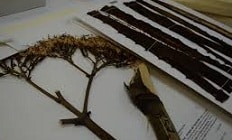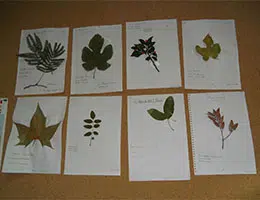 The Latin word herbarius came to our language as herbarium . The first meaning recognized by the dictionary of the Royal Spanish Academy ( RAE ) refers to what is linked to herbs or the rest of the plants.
The Latin word herbarius came to our language as herbarium . The first meaning recognized by the dictionary of the Royal Spanish Academy ( RAE ) refers to what is linked to herbs or the rest of the plants.
It should be remembered that a plant is a living being that carries out photosynthesis and is autotrophic (it can make organic matter from inorganic substances). An herb, on the other hand, is a small plant with a tender stem .
A collection of dried plants is called a herbarium. These plants are subjected to a classification and allow the study of various issues specific to botany, the science focused on plants.
Herbaria plants are usually stored along with data on the person who collected them and the date and place of collection. References to the habitat from which the sample was obtained are also included.
Botanical gardens, research centers and study houses usually have herbaria to generate and disseminate botanical knowledge. They are also used to carry out research .
Precisely, the herbarium is one of the most important tools for taxonomy , the science of classification, since it provides all the necessary material to compare species and thus be able to define them, understanding their differences, the traits that characterize them. Through this task, therefore, it is easy to recognize new species thanks to being able to compare them with those that have already been documented.
Other areas in which the herbarium is very useful for carrying out various research are the following: ecology , systematics, anatomy, morphology, medicine, biogeography, ethnobotany, criminology, genetics, palynology, paleobotany and also for the conservation of natural resources. . On the other hand, it also plays an important role in the fields of education and gardening as a source of reference materials.
 Herbalization is a process of relative complexity, which begins once we have the specimen and decide to store it. To do this we must dehydrate it and dry it under pressure in the shortest possible time, a process that is carried out by pressing . In short, a device is used consisting of two boards between which the plants are placed, covered by sheets of paper and separated from each other with the help of absorbent pads.
Herbalization is a process of relative complexity, which begins once we have the specimen and decide to store it. To do this we must dehydrate it and dry it under pressure in the shortest possible time, a process that is carried out by pressing . In short, a device is used consisting of two boards between which the plants are placed, covered by sheets of paper and separated from each other with the help of absorbent pads.
Having completed this step, it is time to label , which consists of preparing the documentation for each specimen, which must include as much information as possible, without leaving aside the data referring to the place where it was found: its name scientific and vulgar, the exact location in which it was collected, indicating (country, province, region, etc., as well as latitude and longitude), the family of which it is a part, the date of collection, the characteristics of the vegetation that It surrounded it, its color, the characteristics of its aroma and the insects related to it.
The conservation of the specimens can be carried out by freezing them for four days to get rid of all the organisms that may try to destroy them. For assembly, a support is used to which each plant is attached along with its label.
It is important to mention that, in the Middle Ages , botany books were called herbaria, especially if they specialized in medicinal plants . In this sense, a herbarium was a publication related to medicine , since it included the therapeutic action of vegetables.
Herbarium, finally, is the name of the first division of the stomach of ruminant animals . Cows, sheep and goats, among other species, have a herbarium. Their stomachs are completed with three other cavities: the reticulum , the omasum and the abomasum .
